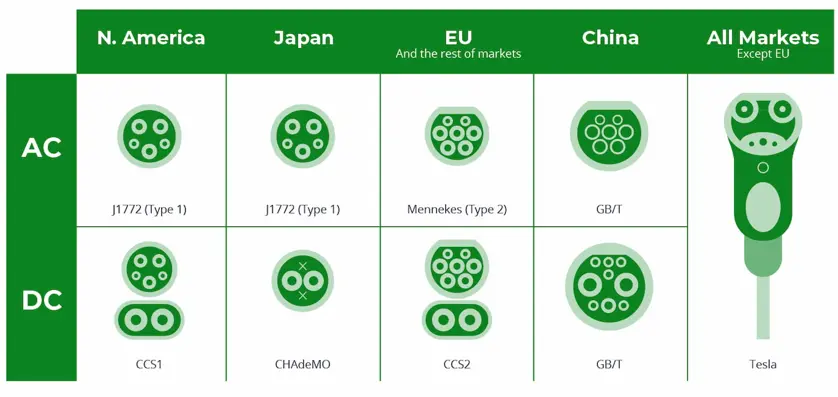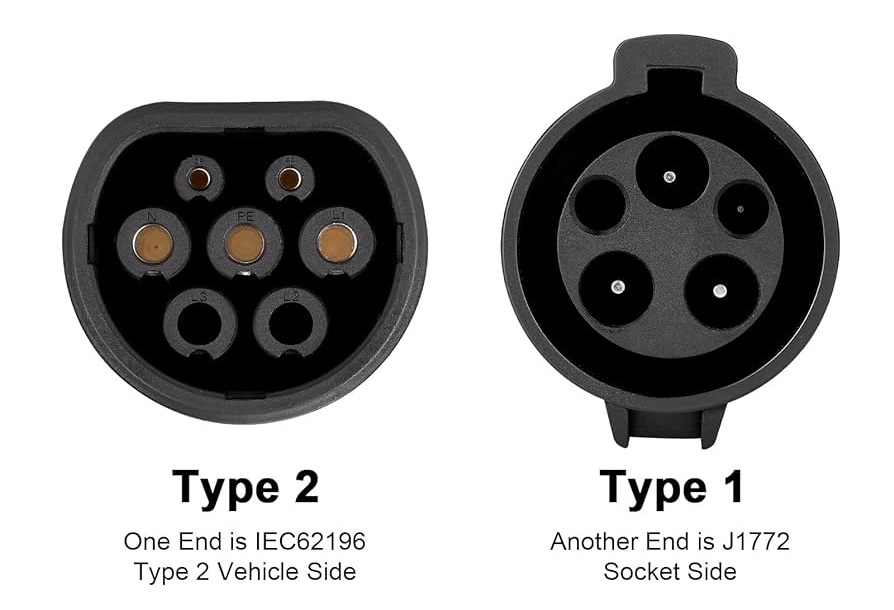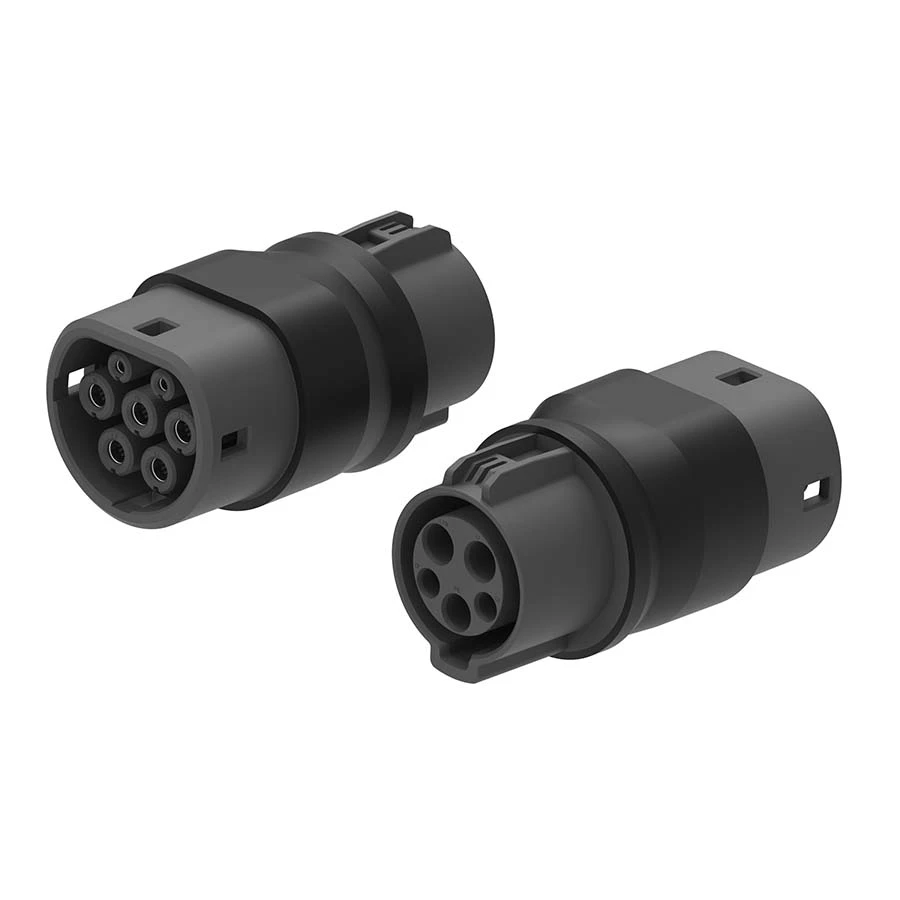
Understanding Type 1 and Type 2 EV Chargers
Electric Car Connectors:
Each electric car is equipped with either a Type 1 or a Type 2 connector, often referred to as a ‘plug’ or ‘socket’ located on the side of the vehicle. To charge your electric car, you need a charging cable that matches your car’s connector. For instance, a Type 2 connector requires an EV charger with a Type 2 charging cable.
This can be likened to the charging cables for iPhones and Samsung phones – they serve the same purpose but require specific cables for their unique charging ports. When purchasing an electric vehicle, the charging cable usually comes with a Type 2 connector.
Type 1 EV Charger:
A Type 1 EV charger features a five-pin design and is commonly used for electric cars in Asia. While it’s rare to find Type 1 EV chargers in the UK, older electric cars like the first-generation Nissan Leaf or the Mitsubishi Outlander PHEV might still use Type 1 connectors. Home EV chargers can come in the Type 1 form, especially untethered chargers.
Type 2 EV Charger:
A Type 2 EV charger has a seven-pin design and is the predominant charger type in the UK due to the widespread adoption of Type 2 electric cars in Europe. Type 2 chargers are commonly used for fast EV charging with Alternating Current (AC). They are versatile, supporting both single-phase and three-phase charging, making them suitable for various settings, including residential and public charging stations. Electric vehicles with a Type 2 connector include popular models like the VW e-Golf, Renault Zoe, and Tesla Model S.
Differences Between Type 1 and Type 2 EV Charging:
- Design: The most noticeable difference lies in the design of the connectors. Type 1 has a five-pin circular design, while Type 2 has seven pins.
- Charging Rate and Electricity Supply: Type 1 chargers offer slower charging rates (3.6kW to 7.4kW) due to single-phase electricity supply limitations. Type 2 chargers support both single-phase and three-phase charging, allowing higher charging rates (up to 22kW at home and 43kW at public stations).
- Regional Adoption: Type 1 is more common in North America and Asia, whereas Type 2 has become the standard in Europe and is increasingly adopted worldwide.
- Locking: Type 2 connectors have locking pins, providing an additional layer of security that Type 1 lacks.

Type 1 Charging Cable Electric Cars: Electric cars using Type 1 charging cables include models like the Nissan Leaf Mk1, Ford Focus Electric, and Mitsubishi Outlander PHEV.
Identifying Your EV’s Connector Type: To determine your electric car’s connector type, examine the design of the charging connector on your vehicle. A five-pin design indicates Type 1, while a seven-pin design signifies Type 2. Consult your electric car’s manual for confirmation.
Choosing Between Type 1 and Type 2 EV Charger: Selecting between Type 1 and Type 2 depends on your electric car’s connector type. If your EV is Type 1 and you plan to switch to a Type 2 vehicle, investing in a Type 2 charger may be more future-proof, considering the broader international adoption of Type 2 connectors.

Adapters and Compatibility: Adapters, such as Type 1 to Type 2 or vice versa, are available. However, if your EV has a Type 1 connector in the UK, it’s advisable to choose a Type 1 compatible charger or a universal home charger for seamless compatibility.
In summary, the key distinctions between Type 1 and Type 2 EV chargers encompass design, charging capabilities, regional adoption, and locking mechanisms. While Type 1 and Type 2 serve the same purpose, their differences highlight the evolving landscape of electric vehicle technology and infrastructure.
